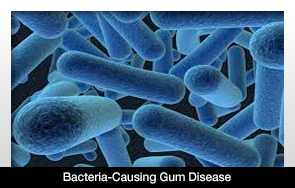 |
Tooth decay affects more than one quarter of children ages 2 to 5, half of those ages 12 to 15 and countless adults in the United States. In fact, tooth decay is the most common chronic disease in children. It is five times more common than asthma and seven times more common than hay fever. While daily brushing and flossing are essential to maintaining healthy teeth and gums, there are other things you can do to further prevent tooth decay from occurring. The good news is tooth decay is preventable.
The Pennsylvania Dental Association (PDA) wants to educate the public about the benefit of dental sealants as a cost-effective, preventive measure to combating tooth decay. Though sealants are most effective in reducing the number of cavities in children whose primary teeth have recently erupted, they also can be beneficial to adults. According to the 2000 Surgeon General’s Report on Oral Health, sealants have been shown to reduce tooth decay by more than 70 percent.
A dental sealant is a thin plastic coating that your dentist can apply to the chewing surfaces of your back teeth (premolars and molars) to help protect them from decay by sealing out plaque and food particles. Sealant application is quick and painless. First, the teeth to be sealed are cleaned and a special solution is applied to help the sealant stick to the tooth. The sealant is then painted onto the tooth. Sometimes a special light is used to help the sealant harden. Sealants typically last several years before a reapplication is needed. Your dentist will continue to monitor the condition of your sealants during your regular dental checkups and reapply when needed.
“With sealants and community water fluoridation, the prospects for a cavity-free lifetime have never been greater,” said Dr. William Spruill, a general dentist from Carlisle and president of PDA.
In addition to dental sealants, PDA recommends the following tips to keep your teeth and gums healthy:
- Brush your teeth, morning and night, with a fluoride toothpaste.
- If your community water supply is not fluoridated, talk to your dentist about fluoride supplements.
- Floss between your teeth at least once per day to help remove plaque.
- Establish healthy eating habits for you and your children. Eat a nutritious, well-balanced diet, including foods from the five major food groups (grains, fruits, vegetables, dairy and meat/poultry/fish). Limit snacking between meals.
- Instead of soda, choose healthy beverages, such as water or milk. Drinking eight to 12 glasses of water per day is recommended and consuming optimally fluoridated water helps prevent tooth decay. “Soda is an adult beverage and should be an occasional treat, never a substitute for milk or water at mealtime, especially for growing children,” Dr. Spruill said.
- Visit the dentist every six months for a checkup and professional cleaning.
Preventing tooth decay is important to both your overall and oral health. If left untreated, tooth decay can cause pain, infection and even tooth loss. It can interfere with your daily activities, including chewing and speaking, and negatively affect your self-esteem.
 |









